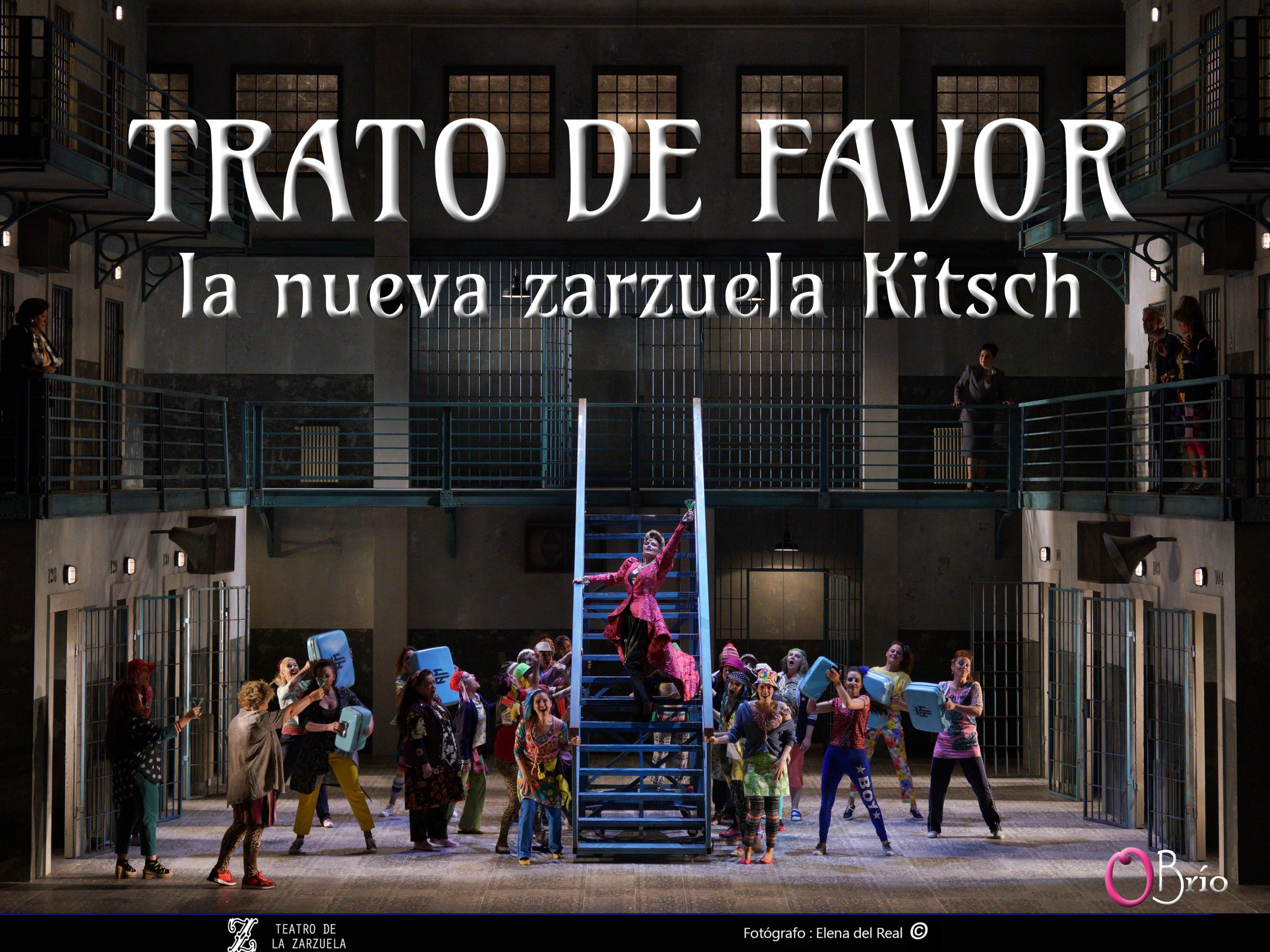







Zarzuela contemporánea
Música de Lucas Vidal
Libreto de Boris Izaguirre
D. musical: Andrés Salado
D. escena: Emilio Sagi
Escenografía: Daniel Bianco
Vestuario: Jesús Ruiz
Iluminación: Albert Faura
Coreografía: Nuria Castejón
D. coro: Antonio Fauró
Reparto: Ainhoa Arteta, Nancy Fabiola Herrera, Enrique Ferrer, Gurutze Beitia,
Amelia Font, María José Suárez, Amparo Navarro, Lara Chaves y Boris Izaguirre.
Continua la búsqueda para crear la zarzuela del siglo XXI. Esta vez el intento ha corrido a cargo del compositor Lucas Vidal y del libretista Boris Izaguirre, a los que el Teatro de la Zarzuela realizó el encargo en 2016.
EL libreto en un conjunto de situaciones imposibles y surrealistas, cuya localización puede ir entre los años 60 y la actualidad. La idea está inspirada en un hecho real, el ingreso en prisión, hace ya unos años, de la mismísima Sophia Loren. Boris Izaguirre saca petróleo de una situación así y crea una sucesión de escenas delirantes, desde la entrada en la cárcel de la protagonista Ana Mía, hasta su participación, también desde la cárcel, en el Festival de Eurovisión. Con numerosos guiños a la actualidad del concurso.
El surrealismo del que hace gala el libreto es, como no podía ser de otra manera, muy divertido e hizo las delicias de un público entregado que asistía al estreno con ganas de disfrutar.
La partitura de Lucas Vidal es un conjunto de músicas de diferentes géneros que no siempre forman un corpus musical homogéneo. Inicialmente presenta un estilo muy cinematográfico, un género que trabaja y conoce muy bien Vidal. Al mismo tiempo está salpicado de fragmentos de zarzuela tradicional, como la alusión directa a un chotis o un pasodoble. Todo ello mezclado con aspectos más modernos. La lírica no es precisamente el género más presente en esta obra que, al margen de la sucesión de elementos diferentes, se dejaba escuchar sin plantear conflictos y tenía un cierto factor sorpresa, que siempre es estimulante.
En el momento de la recreación del Festival de Eurovisión son varias las alusiones de música y libreto, tanto a musicales, como “Mamma mia”, como la participación de representantes españoles en pasadas ediciones del propio festival. Todo adornado con la presencia, desde el patio de butacas, del propio Izaguirre que interpreta un pequeño papel.
Todos estos elementos musicales se desarrollaban en una elegante escenografía de Daniel Bianco con dirección de Emilio Sagi. El maestro Sagi, que maneja como nadie las multitudes sobre el escenario, dispuso una cárcel muy ordenada, con sus galerías y patio, donde sucedía todo tipo de acontecimientos, desde la vida diaria de las reclusas, hasta el festival de Eurovisión.
La dirección musical estuvo a cargo de Andrés Salado, que fue muy acertada, si tenemos en cuenta la diversidad de géneros musicales. Supo dar a cada uno su carácter y diferenciarlos estilísticamente, con color y energía.
El coro, elemento esencial en esta obra, tuvo un papel muy destacado. Se podría decir que la mejor partitura era la escrita para ellos, que parecía un coro wagneriano entre el petardeo Kitsch.
El cuadro de voces contaba con la participación de nombres importantes. Empezando por la protagonista, interpretada por Ainhoa Arteta, que continúa en fase de recuperación vocal y que hizo un gran esfuerzo. Sobre todo, en algunos momentos en los que la partitura se disparaba hacia el agudo.
Nancy Fabiola Herrera, que daba vida a Mayka, directora de la cárcel, sacó toda su capacidad dramática, que no es poca, y pudo lucirse en sus arias.
Amparo Navarro, como Chelo, tuvo los momentos más inspirados, sobre todo en su aria final. Su rol se encontraba entre el drama y el surrealismo cómico, y en ambos casos estuvo muy bien.
María José Suárez, como Venenosa y Amelia Font, como La Colombiana, tenían unos roles con una carga mucho más teatral que resolvieron brillantemente, aunque todos los personajes estaban provistos de una potente comicidad. Genial el personaje de Cuca, interpretado por Lara Chaves.
El único hombre que habitaba la cárcel, Enrique Ferrer, como Juan Miguel, no aportó gran lucimiento a su personaje, no sé si por tesitura, pero se le vio apurado.
Destacar la brillante actuación de Gurtze Beitia, como Mercedes, una especie de gobernanta de la cárcel que empieza siendo un personaje sensato y con autoridad, para descubrirse como el elemento corrupto ante el éxito de la reclusa más famosa.
Se puede decir que hay cierto desequilibrio con algunos personajes que aparecen y desaparecen, como Chelo o Juan Miguel, pero todos forman parte de un divertido universo.
Una obra que da para pensar, ¿es una zarzuela? ¿es un musical? ¿qué es Trato de favor? En cualquier caso, es una obra divertida que está más cerca del planteamiento de la zarzuela tradicional, que otras que hemos visto recientemente. Y es posible que sea un punto de partida real para que la zarzuela continue su andadura hacia el futuro.
Texto: Paloma Sanz
Fotografías: Elena del Real
